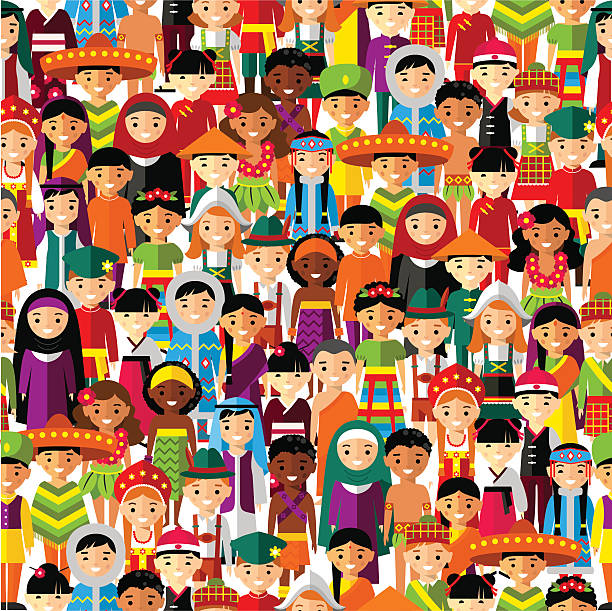
Mystery boxes have become a global phenomenon, offering consumers the thrill of the unknown and the potential for valuable or surprising rewards. However, as these platforms expand across borders, it becomes evident that not all mystery boxes are created equal. Cultural differences shape the preferences, expectations, and experiences of users around the world, influencing how these products are designed, marketed, and received in different regions. These cultural nuances not only determine the popularity of certain types of items but also influence the emotional and psychological dynamics behind the unboxing experience.
The Role of Cultural Norms in Shaping Expectations
In many Western countries, individualism and consumer choice are highly valued. This often translates into mystery boxes that emphasize personalization, rarity, and exclusive items. Customers in the United States or parts of Europe may be drawn to boxes that promise high-value products or branded collectibles, especially those related to pop culture, gaming, or fashion. The excitement in these regions often comes from the perceived financial or social value of the prize, aligning with cultural tendencies to seek status through possessions.
Conversely, in countries with more collectivist cultures, such as Japan, South Korea, or China, mystery boxes often appeal through themes of harmony, cuteness, or group-based appeal. In these areas, consumers may favor boxes with cohesive themes, charming designs, or items that can be shared. The focus is less on individual gain and more on the emotional journey and aesthetic pleasure, aligning with broader cultural values of beauty, community, and shared experiences.
Unboxing Rituals and Emotional Responses
The act of unboxing is itself a culturally mediated experience. In North America, the dramatic flair of unboxing videos, complete with commentary, reactions, and sometimes even competitive elements, mirrors a culture that embraces performance and self-expression. Influencers often dramatize their surprise and excitement, feeding into a communal experience that is shared online for entertainment and validation.
In contrast, unboxing videos from East Asia may appear more subdued, focusing on details, packaging, and the overall experience. The tone is often calmer, more refined, and aesthetically pleasing, reflecting cultural preferences for subtlety and craftsmanship. Rather than the thrill of surprise alone, the pleasure often lies in the presentation and quality of the packaging, which adds to the value and memorability of the item.
Preferences in Item Types and Themes
What constitutes a desirable mystery box item also varies significantly. In the West, users might lean toward tech gadgets, gaming gear, fashion items, or rare branded merchandise. These are products that can enhance personal identity or status. Limited-edition sneakers, gaming consoles, or high-end accessories are common prizes, and users often engage with the platform in hopes of a big win.
In Asian markets, mystery boxes may include stationery, beauty products, anime-themed items, or lifestyle accessories. The value is often derived from cohesion and presentation, rather than sheer monetary worth. For example, a beautifully curated box of pastel-themed stationery may be more appealing than a single high-value gadget. In Southeast Asia, where gifting culture is prominent, mystery boxes that contain items suitable for sharing or giving away are particularly popular.
The Influence of Local Pop Culture and Trends
Local entertainment trends also shape mystery box preferences. In regions where K-pop is a dominant cultural force, such as South Korea and parts of Southeast Asia, mystery boxes featuring idols, photo cards, or themed merchandise are in high demand. In the U.S. or Europe, the trend might lean more toward gaming influencers, streaming personalities, or fashion collaborations.
These regional differences can influence not only what is inside the box but also how the box is branded and advertised. For instance, a mystery box in Brazil might highlight carnival-themed items or embrace vibrant colors and rhythmic motifs, while a box in Scandinavia might be marketed with minimalist designs and eco-friendly packaging.
Religious and Ethical Considerations
Religious and ethical values also play a role in shaping preferences and acceptance of mystery boxes. In regions with strong religious customs, there may be restrictions or sensitivities regarding the types of items included. For example, items related to alcohol, certain fashion styles, or specific symbols might be avoided in parts of the Middle East. Mystery box companies operating in these areas must adapt their offerings to respect cultural taboos and maintain user trust.
Ethical considerations may also vary. While some cultures may be more tolerant of the gamble-like nature of mystery boxes, others may associate such practices with deception or vice. This perception can influence whether mystery box platforms are embraced or criticized, and whether users approach them with enthusiasm or skepticism.
Gender and Age Dynamics Across Cultures
Gender expectations also differ across regions, affecting the target demographics for mystery box platforms. In Japan, for instance, mystery boxes are often marketed to young women with an emphasis on kawaii (cute) aesthetics, beauty products, or fashionable accessories. Meanwhile, in Western countries, marketing may target male gamers or tech enthusiasts, with items geared toward functionality or collector value.
Age also plays a role. In North America, mystery boxes may be popular among young adults and teenagers who follow influencer culture and unboxing trends. In contrast, some Asian countries have seen success marketing mystery boxes to a wider age range, including older adults who are drawn to nostalgia or craftsmanship. In countries like China, elderly consumers may enjoy boxes containing health-related products or traditional items, especially when marketed through family-centric platforms.
Shopping Habits and Digital Ecosystems
Cultural differences in shopping behavior shape how users interact with mystery box platforms. In Western markets, users may be accustomed to high-speed, convenience-based online shopping, with an emphasis on individual purchase decisions. As a result, mystery boxes are often marketed as exciting, standalone purchases.
In Asian markets, shopping is often a more social experience. Live-stream shopping events, group buying, and platform ecosystems like WeChat or LINE integrate commerce with communication. Mystery boxes in these regions may be sold through influencers in real-time, or bundled with loyalty rewards and gamified features. The buying process becomes a communal activity, aligning with cultural norms around togetherness and shared experience.
Perceptions of Risk and Reward
The cultural perception of risk influences how users evaluate the value of mystery boxes. In cultures that value certainty and planning, such as Germany or Japan, users may be more cautious in their purchases, preferring mystery boxes that provide more transparency or guaranteed value. Platforms operating in these areas often emphasize quality assurance, customer support, and detailed product previews.
In contrast, cultures that are more comfortable with risk-taking may embrace the thrill of unpredictability. In the United States, for example, the gamble-like aspect of mystery boxes is often a selling point, especially when combined with marketing that emphasizes high-stakes wins or limited-time offers. This approach taps into a cultural appreciation for luck, ambition, and individual triumph.
Packaging and Presentation Styles
Packaging is another area where cultural preferences diverge. In countries like Japan, the aesthetic value of packaging is taken seriously, with elaborate, beautiful, and sometimes even reusable materials. The unboxing experience becomes a ritual in itself, with attention to detail enhancing the perceived value of the product.
Meanwhile, in Western countries, while sleek packaging is appreciated, the emphasis may be more on practicality or eco-friendliness. Brands might use minimalist designs or recyclable materials, catering to rising environmental awareness. In contrast, in regions where luxury and excess are prized, such as the Middle East, mystery boxes might lean into ornate packaging, glossy finishes, and bold branding to communicate opulence and prestige.
Community Influence and Word-of-Mouth
Cultural differences also impact how users share and promote their mystery box experiences. In collectivist cultures, the opinions of family, friends, or online communities carry significant weight. Word-of-mouth, online reviews, and group recommendations are crucial to the platform’s reputation. This can encourage companies to prioritize customer service and consistent quality to maintain a loyal user base.
In more individualistic cultures, personal experience and influencer endorsements may play a larger role. Users may be more influenced by aspirational figures than peer groups, and marketing strategies often reflect this by partnering with prominent personalities to drive engagement and sales.
Localization Strategies for Global Success
For mystery box companies looking to expand globally, understanding and adapting to these cultural nuances is essential. A one-size-fits-all approach rarely works across different markets. Instead, successful platforms invest in localization — not just in language but in product selection, packaging, presentation, and marketing tone.
This might mean offering region-specific themes, adapting pricing models to local purchasing power, or partnering with influencers who resonate within their cultural context. It could also involve addressing regional holidays, traditions, or consumer behaviors, such as emphasizing gifting during festive seasons or bundling products with culturally relevant motifs.
Adapting to Changing Cultural Landscapes
Culture is not static, and mystery box companies must also stay attuned to changing values and emerging trends. For instance, as sustainability becomes a global concern, even cultures that once prioritized aesthetics may now expect eco-conscious packaging and ethical sourcing. Similarly, as digital identities become more complex, the appeal of mystery boxes may shift from physical items to digital rewards or hybrid experiences involving NFTs and AR.
Platforms that succeed in the long term will be those that can blend cultural awareness with innovation, offering experiences that feel both exciting and deeply resonant with users’ values, habits, and aspirations. By treating culture as a dynamic factor rather than a barrier, mystery box companies can unlock new forms of engagement and loyalty in every corner of the world.
